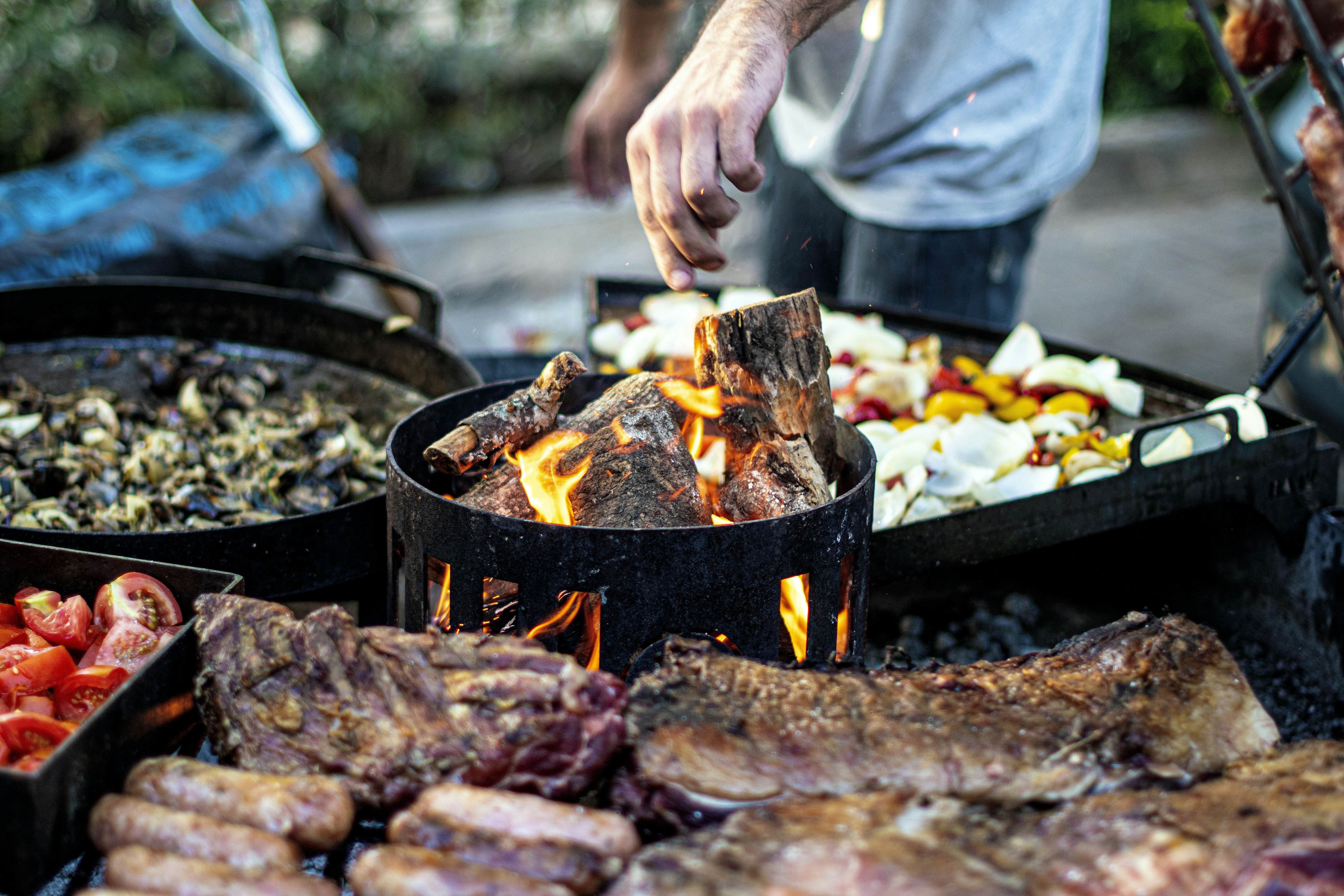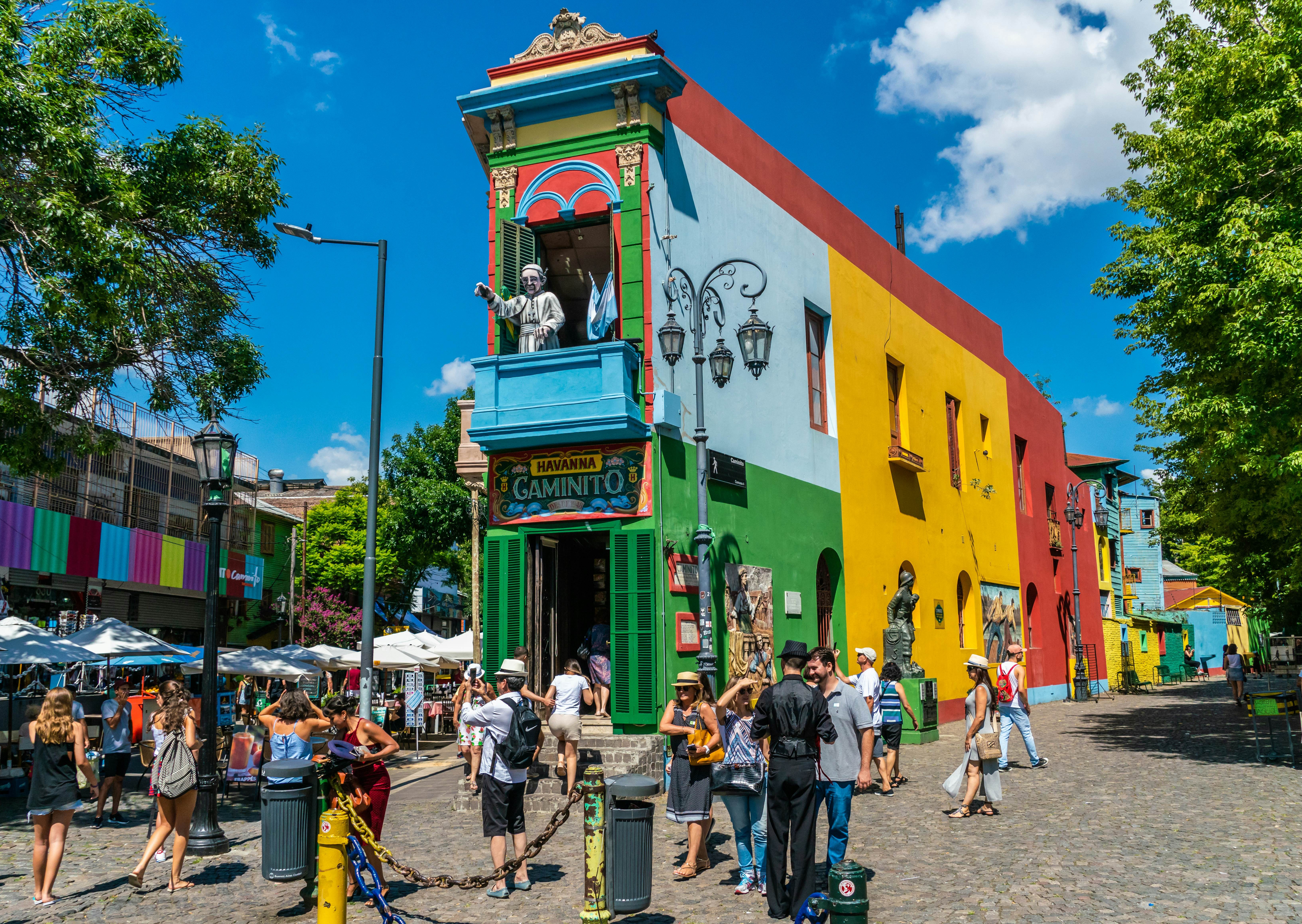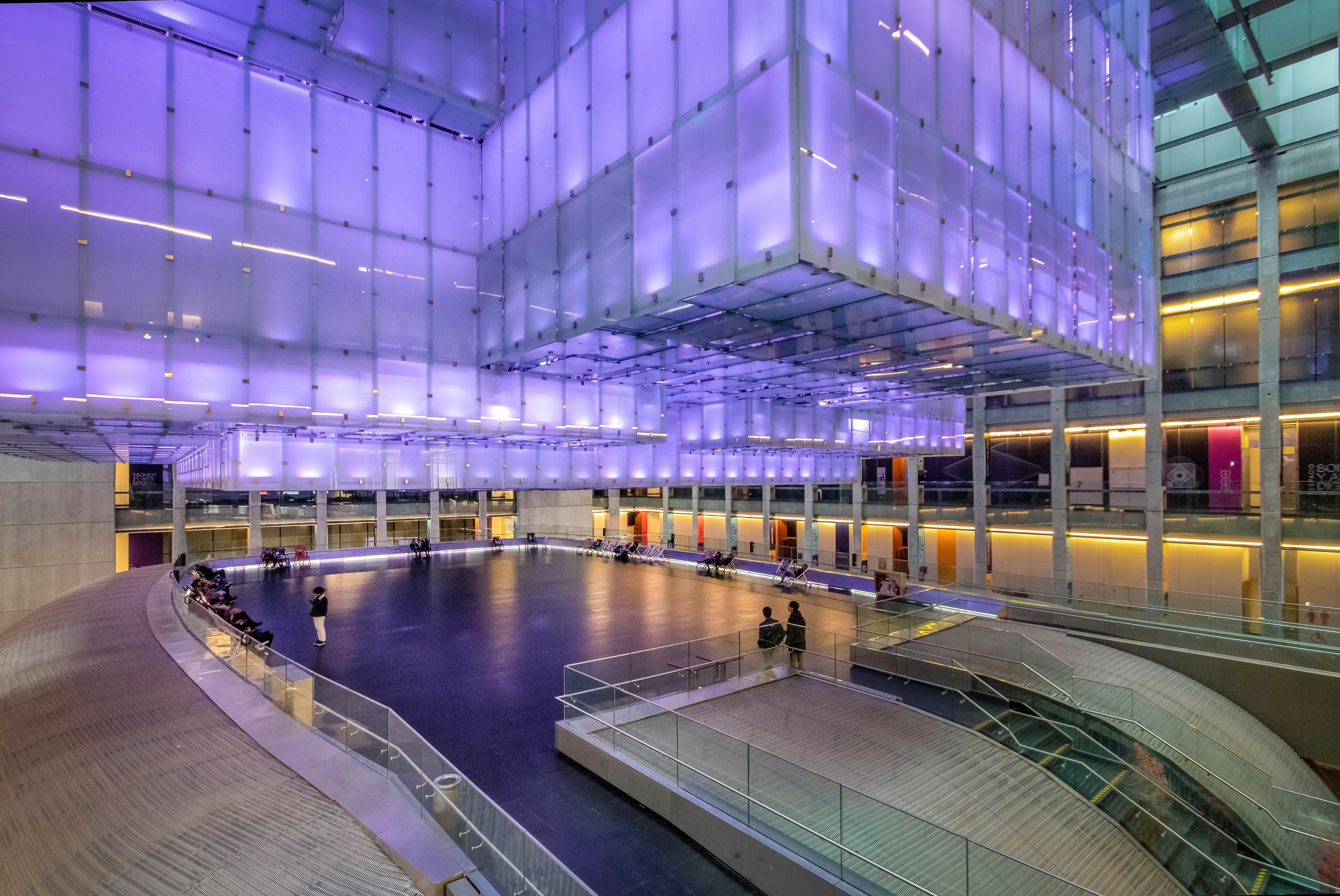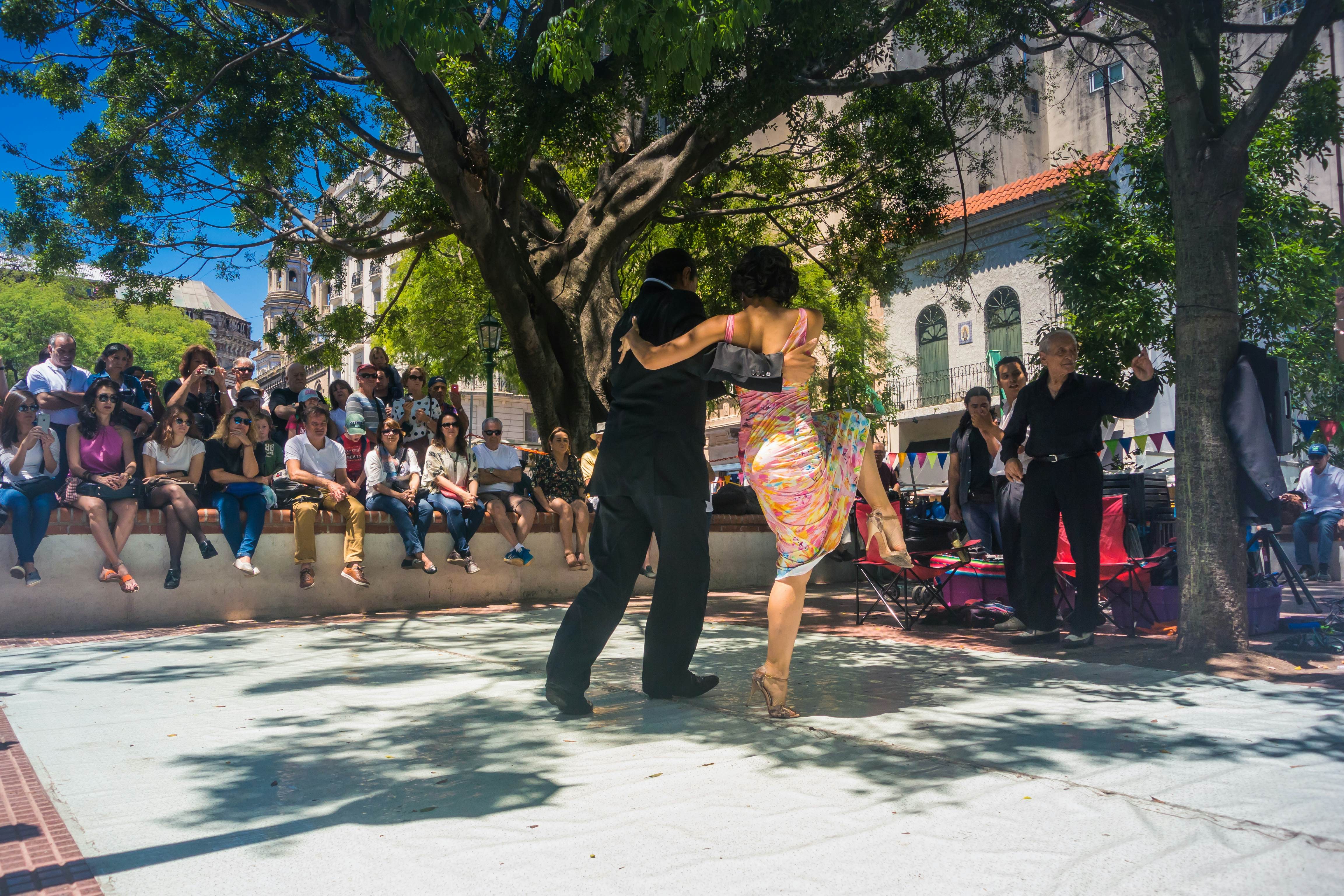Buenos Aires, a city pulsating with tango rhythms and vibrant culture, offers year-round enchantment. SIXT.VN is here to guide you to the perfect time to explore this Argentinian gem, ensuring an unforgettable journey. Whether you crave sun-soaked days, mild temperatures ideal for sightseeing, or cozy winter experiences with fewer crowds, Buenos Aires has something special to offer. So, get ready to discover the top attractions, local events, and insider tips for planning your dream trip to Buenos Aires.
1. When is the Ideal Time to Visit Buenos Aires for Sunshine and Warm Weather?
December to February is the best time to visit Buenos Aires for sunseekers. The city basks in the warmth of the southern hemisphere summer, with average daytime high temperatures reaching 30°C (86°F). This period is perfect for those who love vibrant outdoor activities and soaking up the sun.
During these months, Buenos Aires is alive with energy. Summer means ice cream, cold beers, and asados (barbecues) for locals, filling the air with the enticing aroma of grilling meat. Keep in mind that the humidity can make it feel even hotter, and dramatic thunderstorms often punctuate long, hot spells. According to the World Meteorological Organization, South America experiences its warmest temperatures during this period, making Buenos Aires a prime destination for those seeking summer experiences.
 A meaty spread for an Argentinian asado (barbecue).
A meaty spread for an Argentinian asado (barbecue).
Locals come together for asados (barbecues) during the warm summer months.
1.1 What to Expect During Buenos Aires’ Summer Months?
During the summer months, expect high tourist activity, particularly around Christmas and New Year. Hotels are often busy, and prices tend to be higher.
- Hotel Tip: If your budget allows, consider booking a hotel with a pool to cool off after a day of exploring.
- Holiday Travel: January coincides with summer holidays, leading many porteños (Buenos Aires residents) to escape the city heat for the beach.
- Advance Booking: Book your flights and accommodation well in advance.
1.2 What Events Take Place in Buenos Aires During February?
February is a vibrant month, marked by the Carnaval Porteño. Parades occur every weekend, leading up to the official carnival holiday at the end of the month.
- Carnaval Celebrations: Colorful carnival troupes perform murga, a style of percussion-heavy music and dancing.
- Interactive Fun: Watch out for kids with water bombs and foam sprays during the celebrations.
- Cultural Significance: According to Argentina’s Ministry of Culture, Carnaval Porteño is one of the most significant cultural events in Buenos Aires, reflecting the city’s diverse heritage and artistic expression.
1.3 What are the Best Ways to Stay Cool in Buenos Aires During Summer?
Staying cool during the Buenos Aires summer involves a mix of strategies to combat the heat and humidity:
- Hydration: Drink plenty of water throughout the day to stay hydrated.
- Timing: Plan outdoor activities for the early morning or late afternoon to avoid the peak heat hours.
- Indoor Activities: Take advantage of air-conditioned spaces like museums, cafes, and shopping malls.
- Local Treats: Enjoy refreshing treats like helado (ice cream) and cold beverages.
2. When Should You Travel to Buenos Aires for Sightseeing and Mild Temperatures?
March to May and September to November are great times for sightseeing in Buenos Aires, thanks to their mild temperatures. During these months, the average temperature hovers around a pleasant 22°C (72°F), making it perfect for exploring the city’s attractions.
Fall and spring offer a mix of sunshine and occasional rainy days, providing a perfect excuse to explore Buenos Aires’ old-school bars and cafes. According to INDEC (National Institute of Statistics and Census), these shoulder seasons provide a balance between good weather and fewer tourists, enhancing the overall travel experience.
 Tourists visiting the famous coloured houses of La Boca, Buenos Aires
Tourists visiting the famous coloured houses of La Boca, Buenos Aires
Warm and clear days make spring a great time to take photos in colorful La Boca.
2.1 What Activities are Ideal During Buenos Aires’ Fall and Spring?
The moderate temperatures of fall and spring are ideal for enjoying the city’s top experiences without the summertime crowds.
- Puerto Madero: Explore the revamped docks and wetland nature trails at Puerto Madero.
- Teatro Colón: Attend an opera, ballet, or concert at Teatro Colón.
- Museo Nacional Bellas Artes: Admire the creativity on display at the Museo Nacional Bellas Artes.
- Cementerio de la Recoleta: Visit the grand tombs of the Cementerio de la Recoleta.
- Eco-Tourism: According to Lonely Planet, these seasons are perfect for eco-tourism and enjoying outdoor activities without the intense summer heat.
2.2 What Cultural Events Take Place in Buenos Aires During Fall and Spring?
Buenos Aires is a city that celebrates culture, and spring and fall host a number of exciting events:
- Festival Internacional de Buenos Aires (FIBA): This biannual festival fills stages and public spaces with theater, dance, music, and visual arts.
- Lollapalooza: Big bands hit the stage in March for Argentina’s Lollapalooza music festival.
- Noche de los Museos: Culture vultures set their sights on the Noche de los Museos in September, when museums open their doors for late-night events.
- Buenos Aires Marathon: In October, the city hosts the world’s elite distance runners for the Buenos Aires Marathon.
- Semana del Orgullo BA: The streets come alive for Semana del Orgullo BA (LGBTQI+ Pride Week) at the end of October.
- Buenos Aires Jazz Festival: November is packed with events such as the Buenos Aires Jazz Festival.
2.3 How Can You Save Money on Accommodation During the Shoulder Seasons?
Hotel occupancy rates are usually at their lowest between April and June, making it a good time to find discounted rates.
- Travel in April-June: Take advantage of lower hotel rates.
- BAFICI: Film buffs can enjoy the independent film festival BAFICI at the end of April.
- Local Celebrations: Experience local culture by joining porteños in celebrating the anniversary of the revolution of May 25, 1810, with traditional food like locro.
2.4 What Makes November a Particularly Good Month to Visit?
November stands out as an exceptional time to visit Buenos Aires due to several factors:
- Pleasant Weather: The air warms up, creating comfortable conditions for outdoor activities and exploration.
- Jacaranda Bloom: The blossom of jacaranda trees turns the streets purple, adding a stunning visual appeal to the city.
- Eventful Calendar: The calendar is packed with diverse events like the Buenos Aires Jazz Festival, offering something for every interest.
3. What are the Advantages of Visiting Buenos Aires in Winter?
June to August is the best time to visit Buenos Aires for dancing and discounts. Winters can be overcast and chilly, with average highs around 16°C (61°F) and lows around 8°C (46°F), offering a unique charm for travelers seeking a different experience.
Although rain is possible year-round, the weather in winter is often dry. The sunny winter days are perfect for exploring the city without too much company at the sights. With fewer visitor numbers, it’s easy to find cheaper flights and rooms. According to Booking.com, winter in Buenos Aires offers some of the best deals on accommodation and flights.
 Interior of the Kirchner Cultural Centre (Centro Cultural Kirchner or CCK) in Buenos Aires, Argentina, lit by purple light.
Interior of the Kirchner Cultural Centre (Centro Cultural Kirchner or CCK) in Buenos Aires, Argentina, lit by purple light.
Spring is the time for culture after dark, with lively evening events as part of the Night of the Museums.
3.1 What Cultural Events Occur During Buenos Aires’ Winter?
The winter months are filled with unique cultural experiences:
- Exposición Rural: In July, the countryside comes to the heart of the city during the Exposición Rural, a 10-day agriculture and livestock show.
- Día de la Independencia: Public displays of national pride take place on Día de la Independencia (Independence Day) on July 9.
- Tango BA Festival y Mundial: August hosts the Tango BA Festival y Mundial, with couples from around the world competing in tango dancing.
- ArteBA: Explore the ArteBA arts fest in August.
- Cultural Significance: According to Argentina’s Ministry of Tourism, these events provide unique insights into Argentine culture and traditions.
3.2 Why is Winter a Good Time to Experience Tango in Buenos Aires?
Winter offers a unique opportunity to immerse yourself in the tango culture without the hustle and bustle of peak tourist seasons.
- Tango BA Festival: Attend the Tango BA Festival y Mundial in August, a premier event celebrating tango.
- Milongas: Enjoy authentic milongas (tango dance events) with locals.
- Classes: Take tango classes and learn from the best.
- Intimate Experience: Enjoy a more intimate and authentic tango experience with fewer crowds.
3.3 What are the Benefits of Visiting Buenos Aires During the Off-Season?
Visiting Buenos Aires during the off-season (winter) offers several benefits:
- Lower Prices: Enjoy cheaper flights and rooms due to the slump in visitor numbers.
- Fewer Crowds: Explore the city’s sights without the crowds of tourists.
- Unique Events: Participate in unique cultural events like the Exposición Rural and Tango BA Festival.
- Authentic Experience: Get a more authentic experience of Buenos Aires life.
4. What are the Top 5 Reasons to Travel to Buenos Aires?
Buenos Aires, a city celebrated for its rich culture, passionate tango, and European-influenced architecture, offers a unique and captivating travel experience.
4.1 Tango Culture
Tango is the heart and soul of Buenos Aires. The city’s intimate connection with this passionate dance is evident in its streets, milongas, and festivals.
- Milongas: These tango dance halls offer an authentic experience, where locals and tourists alike come together to dance.
- Tango Performances: The city stages numerous tango shows, from intimate performances in historic venues to grand spectacles in theaters.
- Tango BA Festival: One of the world’s most significant tango events, featuring performances, classes, and competitions.
According to UNESCO, tango is recognized as an Intangible Cultural Heritage, highlighting its importance to Argentine culture and identity.
 A couple dancing tango in a street performance in San Telmo neighborhood of Buenos Aires.
A couple dancing tango in a street performance in San Telmo neighborhood of Buenos Aires.
Any time of year is the right time for the tango in Buenos Aires.
4.2 Architectural Splendor
Buenos Aires is often referred to as the “Paris of South America” due to its stunning architecture, which blends European styles with local influences.
- Recoleta Cemetery: This elaborate cemetery is filled with ornate mausoleums and sculptures, showcasing a range of architectural styles.
- Teatro Colón: One of the world’s most renowned opera houses, celebrated for its acoustics and stunning design.
- Avenida 9 de Julio: One of the widest avenues in the world, framed by grand buildings and monuments.
4.3 Culinary Delights
Argentine cuisine is a key part of the Buenos Aires experience, with a strong emphasis on meat and wine.
- Asado: Traditional Argentine barbecue, featuring a variety of grilled meats.
- Empanadas: Savory pastries filled with meat, cheese, or vegetables.
- Dulce de Leche: A sweet caramel-like spread used in desserts and pastries.
According to a study by The World’s 50 Best Restaurants, Buenos Aires is home to several world-class restaurants that highlight the country’s culinary excellence.
4.4 Rich Cultural Scene
Buenos Aires offers a vibrant cultural scene with numerous museums, theaters, and art galleries.
- Museo Nacional de Bellas Artes: Showcases Argentine and European art.
- MALBA (Latin American Art Museum of Buenos Aires): Features modern and contemporary art from Latin America.
- San Telmo: A historic neighborhood known for its antique shops, cobblestone streets, and cultural events.
4.5 Passionate Nightlife
Buenos Aires is known for its lively nightlife, offering options for every taste.
- Palermo: A trendy neighborhood with bars, clubs, and restaurants.
- Recoleta: Features upscale bars and clubs.
- San Telmo: Offers a more bohemian atmosphere with tango shows and live music venues.
5. What are the Top 5 Tips for Planning a Trip to Buenos Aires?
Planning a trip to Buenos Aires can be an exciting endeavor. Here are five essential tips to ensure a smooth and memorable experience:
5.1 Research and Plan Ahead
- Best Time to Visit: Determine the ideal time to visit based on your preferences, whether it’s the summer heat, mild shoulder seasons, or cheaper winter months.
- Accommodation: Book your accommodations in advance, especially if traveling during peak season.
- Activities: Plan your itinerary, including top attractions, cultural events, and day trips.
5.2 Learn Basic Spanish
While many locals in tourist areas speak English, knowing basic Spanish phrases can enhance your experience.
- Greetings: Learn how to say hello, goodbye, and thank you.
- Directions: Know how to ask for directions and understand basic street signs.
- Ordering Food: Be able to order food and understand menu items.
According to a survey by Instituto Cervantes, knowing Spanish significantly improves the travel experience in Spanish-speaking countries.
5.3 Use Reliable Transportation
Buenos Aires offers various transportation options, but it’s essential to choose reliable and safe methods.
- Subte (Subway): An efficient and affordable way to get around the city.
- Taxis and Ride-Sharing Services: Use official taxis or reputable ride-sharing apps like Uber.
- Buses: Extensive bus network, but can be confusing for tourists.
5.4 Be Aware of Safety and Scams
Like any major city, Buenos Aires has its share of safety concerns.
- Petty Theft: Be cautious of pickpockets, especially in crowded areas.
- Scams: Be aware of common tourist scams, such as fake currency exchange.
- Secure Valuables: Keep your valuables secure and out of sight.
5.5 Embrace the Local Culture
Immerse yourself in the local culture to get the most out of your trip.
- Tango: Attend a tango show or take a tango class.
- Food: Try traditional Argentine dishes like asado and empanadas.
- Mate: Share mate, a traditional Argentine tea, with locals.
6. How Does SIXT.VN Enhance Your Travel Experience to Buenos Aires?
SIXT.VN offers a range of services designed to make your trip to Buenos Aires seamless and enjoyable. From airport transfers to curated tour packages, SIXT.VN ensures a hassle-free travel experience.
6.1 Airport Transfers
- Convenience: SIXT.VN provides reliable airport transfer services, ensuring you reach your accommodation comfortably and on time.
- Safety: Professional drivers and well-maintained vehicles guarantee a safe journey.
- Efficiency: Avoid the stress of navigating public transportation or finding a taxi upon arrival.
6.2 Hotel Booking
- Wide Selection: SIXT.VN offers a wide selection of hotels to suit every budget and preference.
- Convenience: Easy online booking and secure payment options.
- Expert Advice: Recommendations based on location, amenities, and customer reviews.
6.3 Tour Packages
- Curated Experiences: Choose from a variety of curated tour packages that showcase the best of Buenos Aires.
- Expert Guides: Knowledgeable local guides provide insights into the city’s history, culture, and attractions.
- Hassle-Free Planning: Let SIXT.VN handle the details, so you can focus on enjoying your trip.
6.4 24/7 Customer Support
- Assistance: Round-the-clock customer support is available to assist with any questions or concerns.
- Peace of Mind: Knowing that help is just a phone call away provides peace of mind throughout your trip.
- Multilingual Support: Support is available in multiple languages to cater to international travelers.
7. What are the 5 Most Common Misconceptions About Traveling to Buenos Aires?
There are several common misconceptions about traveling to Buenos Aires that can affect your travel plans. Addressing these misconceptions can help you better prepare for your trip.
7.1 It’s Always Hot
- Misconception: Buenos Aires is always hot.
- Reality: Buenos Aires has distinct seasons, with hot summers (December to February) and cool winters (June to August).
7.2 It’s Too Dangerous
- Misconception: Buenos Aires is too dangerous for tourists.
- Reality: While petty theft can be an issue, Buenos Aires is generally safe for tourists who take precautions.
7.3 Everyone Speaks English
- Misconception: Everyone in Buenos Aires speaks English.
- Reality: While many people in tourist areas speak English, learning basic Spanish phrases can greatly enhance your experience.
7.4 It’s Only About Tango
- Misconception: Buenos Aires is only about tango.
- Reality: While tango is a significant part of the culture, Buenos Aires offers much more, including stunning architecture, culinary delights, and a rich cultural scene.
7.5 It’s Too Expensive
- Misconception: Buenos Aires is too expensive for budget travelers.
- Reality: Buenos Aires can be affordable, with options for budget accommodation, street food, and free activities.
8. What are the Top 5 Hidden Gems in Buenos Aires?
Beyond the famous landmarks, Buenos Aires holds many hidden gems waiting to be discovered. Exploring these lesser-known spots can offer a more authentic and unique travel experience.
8.1 El Ateneo Grand Splendid
- Description: A bookstore housed in a beautifully restored former theater.
- Why Visit: Unique ambiance and architectural splendor.
8.2 Pasaje Lanín
- Description: A colorful street adorned with murals and street art.
- Why Visit: Vibrant art and a glimpse into local creativity.
8.3 Japanese Garden
- Description: A serene garden offering a peaceful escape from the city.
- Why Visit: Tranquil atmosphere and traditional Japanese design.
8.4 Feria de Mataderos
- Description: A traditional gaucho fair held on Sundays.
- Why Visit: Authentic Argentine culture, food, and crafts.
8.5 Zanjón de Granados
- Description: An archaeological site revealing the city’s early foundations.
- Why Visit: Historical insights and a unique underground experience.
9. What are the Top 5 Day Trips from Buenos Aires?
Taking day trips from Buenos Aires can enhance your travel experience by providing a glimpse into the surrounding areas and diverse landscapes.
9.1 Tigre Delta
- Description: A network of islands and waterways, perfect for boat tours and exploring local culture.
- Why Visit: Scenic beauty and a relaxing escape from the city.
9.2 Colonia del Sacramento, Uruguay
- Description: A historic town across the Río de la Plata, known for its cobblestone streets and colonial architecture.
- Why Visit: UNESCO World Heritage site and a charming day trip.
9.3 San Antonio de Areco
- Description: A traditional gaucho town, offering a glimpse into Argentine cowboy culture.
- Why Visit: Authentic gaucho experience and local crafts.
9.4 La Plata
- Description: The capital of Buenos Aires Province, known for its grand architecture and museums.
- Why Visit: Architectural landmarks and cultural attractions.
9.5 Luján
- Description: Home to the Basilica of Luján, a stunning neo-Gothic church.
- Why Visit: Religious significance and architectural beauty.
10. FAQ: Planning Your Trip to Buenos Aires
10.1 What is the best time to travel to Buenos Aires for good weather?
The Best Time To Travel To Buenos Aires for good weather is during the spring (September to November) and fall (March to May) months, when temperatures are mild and comfortable.
10.2 Is Buenos Aires safe for tourists?
Yes, Buenos Aires is generally safe for tourists, but it is important to be aware of your surroundings and take precautions against petty theft, especially in crowded areas.
10.3 What language do they speak in Buenos Aires?
The primary language spoken in Buenos Aires is Spanish. While many people in tourist areas speak English, learning basic Spanish phrases can enhance your experience.
10.4 How can I get around Buenos Aires?
You can get around Buenos Aires using the Subte (subway), buses, taxis, and ride-sharing services like Uber. The Subte is an efficient and affordable option for covering long distances.
10.5 What should I pack for a trip to Buenos Aires?
What you should pack for a trip to Buenos Aires depends on the time of year. In summer, pack light clothing, sunscreen, and a hat. In winter, pack warm layers, including a coat, scarf, and gloves.
10.6 What are some must-try foods in Buenos Aires?
Some must-try foods in Buenos Aires include asado (Argentine barbecue), empanadas, dulce de leche, and mate.
10.7 What is the currency used in Buenos Aires?
The currency used in Buenos Aires is the Argentine Peso (ARS).
10.8 Are credit cards widely accepted in Buenos Aires?
Credit cards are widely accepted in Buenos Aires, especially in hotels, restaurants, and larger stores. However, it is a good idea to carry some cash for smaller establishments and markets.
10.9 What are some cultural etiquette tips for visiting Buenos Aires?
Some cultural etiquette tips for visiting Buenos Aires include greeting people with a kiss on the cheek, being punctual for appointments, and showing appreciation for the local culture by trying to speak some Spanish.
10.10 How can SIXT.VN help me plan my trip to Buenos Aires?
SIXT.VN offers a range of services to help you plan your trip to Buenos Aires, including airport transfers, hotel booking, curated tour packages, and 24/7 customer support.
Ready to explore Buenos Aires? Let SIXT.VN take care of your travel needs. From seamless airport transfers and comfortable hotel bookings to expertly curated tour packages, we ensure a hassle-free and unforgettable experience. Contact us today and start planning your dream trip to Buenos Aires! Address: 260 Cau Giay, Hanoi, Vietnam. Hotline/Whatsapp: +84 986 244 358. Website: SIXT.VN.



